Kelly Jensen's Blog, page 81
August 10, 2015
Cover Lookalikes
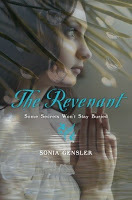
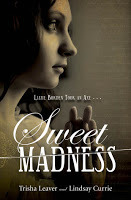
First up are a pair of twins. The Revenant by Sonia Gensler was published in 2011 by Knopf Books for Young Readers and features a girl in the late 19th century who goes to teach at a school in Indian Territory and gets caught up in a ghost story. Presumably, she's the girl on the cover. The transparency of the background image gives the book a ghostly feel, and I think it works. Sweet Madness by Tricia Leaver and Lindsay Currie is a forthcoming YA novel from Merit Press (September 18) about the real historical person Bridget Sullivan, an Irish immigrant who takes a job as a maid for the Bordens - yes, those Bordens - and becomes fast friends with Lizzie, their sweet daughter. I'm not sure if that's meant to be Bridget or Lizzie on the cover, but knowing that it's a book about the Lizzie Borden murders makes the girl's interlaced fingers and very slight smile take on a very different tenor than that of The Revenant.
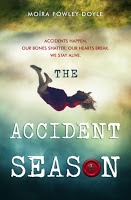

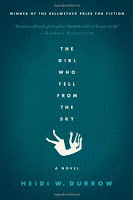
These next three books aren't identical to each other, but every time I see one of them, I think of the other two. Perhaps falling girls is a mini-trend for book covers? It's certainly better than the dead girl cover trend which I want to go away forever. The Accident Season by Moira Fowler-Doyle is being published by Kathy Dawson Books on August 18 and features a family who becomes accident-prone at the end of each October, like a yearly curse. I read The Midnight Dress by Karen Foxlee when it was published in 2013 by Knopf Books for Young Readers and quite liked it. It's realistic fiction with a dreamy sort of quality to it, not quite magical realism. I think this cover really works because the dress is the focal point of the story and it pops on the cover. The Girl Who Fell From the Sky is an adult novel from 2010 that I don't know much about, but its cover reminds me a lot of the fan-made minimalist movie posters/popular book covers that are so in right now. Are there any other falling girls on covers that I missed?
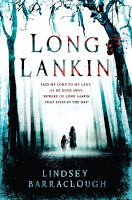
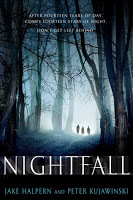
Here's another pair of close relations. The stock images are different, but the ominous trees, color schemes, and creepy figures standing in the distance, bathed in light of unknown origin, are the same. Unsurprisingly, both of these novels - Long Lankin by Lindsey Barraclough, published by Candlewick in 2012, and Nightfall by Jake Halpern and Peter Kujawinski, forthcoming September 22 by G. P. Putnam's Sons Books for Young Readers - are horror novels. While these covers certainly get the point across, I'd like to see some fresher imagery for horror.







 Related StoriesHardcover to Paperback Makeovers: 6 YA Changes to ConsiderThe Warrior, the Lover, and the Cultist: Three Brief ReviewsOn The Radar: 10 Books for August
Related StoriesHardcover to Paperback Makeovers: 6 YA Changes to ConsiderThe Warrior, the Lover, and the Cultist: Three Brief ReviewsOn The Radar: 10 Books for August
August 9, 2015
Hardcover to Paperback Makeovers: 6 YA Changes to Consider
I've rounded up six recovered YA titles hitting shelves in the next few months that have caught my eye. Some of these are winners and some...well, they should have stuck with the original idea. Perhaps most interesting is something I'll note at the end of the post. There's definitely a new trend emerging in YA cover design, and while I think I get the point of it, I'm not sure it's entirely successful at what it's attempting to do.
I'd love to hear what you think about these make overs, too. Which ones are great and which ones leave you feeling a little cold? Sound off in the comments and feel free to share any recent cover changes you've spotted that have stood out to you. As always, the hardcover image is on the left, with the paperback iteration on the right.
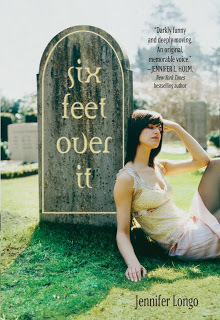
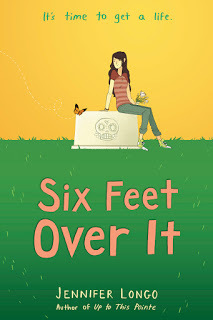
I picked up Jennifer Longo's Six Feet Over It last year and talked about it a little bit in a post last fall about the microtrend of the death business in YA fiction. This book runs on the lower end of YA in terms of its voice and appeal, as the main character is a young high schooler, as opposed to the older ones that have become more abundant.
When I first saw the hardcover of this book a couple of years ago, it seemed to me like the model looked photoshopped. I spent a long time looking at it, and then I asked multiple people to explain to me what seemed "off" about this image. Everyone said the same thing: her neck looks really, really long. While people who are tall can have very long necks, the way she's posed in the picture doesn't show her height, so she looks strange if she's not been digitally edited. The placement of the book's title on the headstone is really creative, but the overall feel of the cover itself is dark and not particularly appealing. I like the use of the blurb on this one, as it's from Jennifer Holm, suggesting that this is a suitable read for the younger teen set.
The paperback makeover for this one doesn't really do much for me on a personal level, as I'm becoming really over the illustrated cover trend. However, I think this cover fits the book a million times better. It's not as dark or foreboding, and it has a tiny bit of tongue-in-cheek humor to it, with the way that the girl is on a headstone that has a cartoon-y skull on it. It's really appealing and inviting in the way that the original look simply isn't, and more, it speaks to the bit of dark humor in the book itself. The tag line here actually works better than the blurb does on the hard cover, as it says essentially the same thing to readers, just in different words and a different approach. I do find it interesting that Longo is introduced as the author of Up To This Pointe beneath her name, since that book will publish after Six Feet Over It came out.
For me, the paperback is a winner here, even though it's not my personal taste. It will hit shelves January 12.
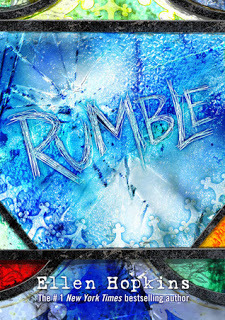
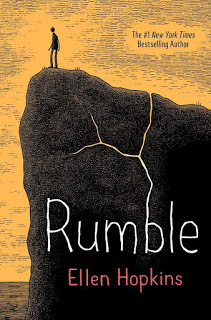
Ellen Hopkins was always a go-to for me for readers seeking a good, fast-paced, edgy, dark, realistic YA book at the library. And for a long time, her packaging was brilliant -- the books were shorter and fatter than most, and they were easily recognizable on the shelf.
But something happened and all of her work got a redesign to it, making the trim more in line with standard YA trade paperbacks, rather than they had been. The redesign meant a new marketing look, but somewhere in there, it just got really lost.
I'm not sure how I feel about the hardcover for Rumble, as it tries to blend the original Hopkins cover looks with the new one, and I'm not sure it entirely succeeds. But compared to the paperback, which has absolutely zero connection to Hopkins branding....it's worlds better. The paperback looks really cheap and uninspired, and since it stands apart from all of her other books, I'm not sure it's going to draw in long-time fans nor engage potential new readers. In many ways, the paperback looks more middle grade than it does upper YA, which is actually a bit of a problem, since her books aren't aimed at that audience in any capacity.
Who is that stick figure? Why is the font for the title so thin? How come we don't have the signature look of Hopkins name on the redesign? This looks so flimsy and forgettable in a way that Hopkins and her work simply are not. I have a hard time imagining a teen -- or any reader, really! -- looking at this cover and thinking it'll be an intense, dark, gritty read. It looks sad.
Part of me hopes this isn't a real paperback redesign and it's instead a mistake that got out. It'd be a real shame to see these books get this sort of treatment because it weakens the work and absolutely weakens the appeal of the way these books look. Cover art and design is really important, especially when it comes to reader's advisory and connecting the right book to the right reader. This cover is doing this book zero favors.
The hardcover is the winner here by leaps and bounds, even though it's not spectacular itself. The paperback hits shelves February 2 and I really hope they reconsider this look.
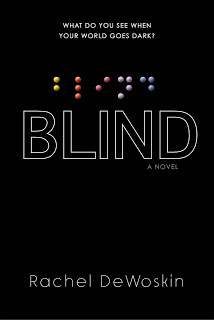
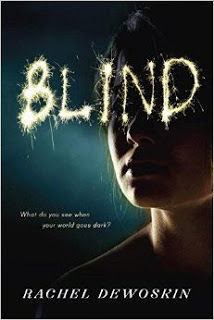
Rachel DeWoskin's Blind cover is doing something that differs in the redesign than all of the rest of the covers in this batch of makeovers: it adds a model to it. The original hardcover is pretty stark -- it's black, with a title that drives the cover, even though the title itself isn't full. It's an unfilled set of letters. Above it are the braille designations and the simple tag line "What do you see when your world goes dark?" You know immediately what the book is about, and the tag line further amplifies that this is a story about a blind character.
The redesigned cover brings a model into the picture. Notice on all of the other cover redesigns in this post, that the human models have been removed. The redesigns are moving more towards using an image-driven, people-less look or they're using illustrations to render an individual. Not so in this case: but it also really works here, as this particular redesign tells us even more about the story than the original hardcover. We know it's a girl who is blind, and we know that it might have something to do with fireworks, based on the font used for the title (and spoiler, it's a firework that causes her to lose her sight). The tag line remains the same, but I think here it's even more effective.
While both of these are solid covers that fit the story, I suspect that the paperback might have a tiny bit more appeal. Or, at least, gives readers even more insight into what the book's about. The paperback edition of Blind will hit shelves April 5.
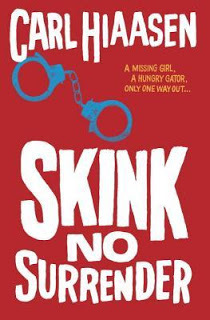
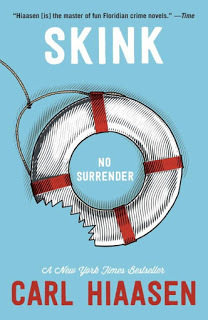
Maybe it's because I read a little bit in an echo chamber, but wasn't Skink No Surrender supposed to be a really huge book a couple of years ago? I can't remember seeing a whole lot about it, other than it's a title by Hiassen and he's popular without additional significant hype.
This redesign is really fascinating to me because it definitely feels like the intended audience for this book is being shifted. The hardcover features handcuffs -- so you know there's a crime story here -- and you get a tag line that reads "A missing girl, a hungry gator, only one way out..." The title font is what drives the image, and the white-on-red makes it really pop. This cover isn't spectacular, but it stands out quite a bit from other YA titles since it's so simple.
The paperback edition of Skink is so different and feels like it's trying to reach an adult, rather than YA, readership. Or perhaps this cover is really aimed at those adults who read YA and are familiar with Hiassen. Look at the pull quote -- rather than make use of the tag line, this one pulls out a review from Time, which calls Hiassen a master of Florida crime fiction. Is that something teenagers care about at all? Adults, on the other hand, will know what that means.
But the thing that's most interesting to me in the redesign is how the title looks. Where the hardcover tells you the title is Skink No Surrender, the paperback redesign looks as though the title is Skink with the "No Surrender" being almost a tag line within the life raft. This particular redesign looks in line with his adult novels, while the original hardcover looks in line with his middle grade novels.
There's not one that does it better here. Both elicit about the same reaction from me, but I think that's because they seem to be serving different readerships. You can snag the paperback December 1.

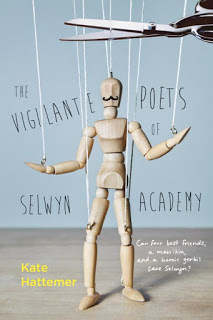
The redesign of Kate Hattemer's The Vigilante Poets of Selwyn Academy might be my favorite of the bunch, which is saying quite a bit since I don't dislike the original look, either. I think that the hardcover is pretty appealing, especially as it has two teen boys featured on the cover in a way that makes them look like your average (art school) boys. The font drives the cover and I think the choices used in mixing the fonts really works. Likewise, the green on yellow color scheme is memorable to me, since I can't say I see it frequently in YA. Maybe by some eyes it might look a little dated, but I don't see it.
The paperback, though, I love. I love everything that it says -- this is a book about art kids. But it's a book about art kids that's not necessarily traditional and that might be quite funny. I get that from the scissors cutting the string there, along with the mustache drawn on the figure's face. I will say I'm not super keen on the title font treatment, as that thin wispy look just feels weak. And interestingly, there's been an added tag line to the redesign, which reads "can four best friends, a manikin, and a heroic gerbil save Selwyn?" I find that particular tag line intriguing because what does a heroic gerbil have to do with this?
You can grab the paperback edition, which I think edges out the look of the hardcover, on March 8.
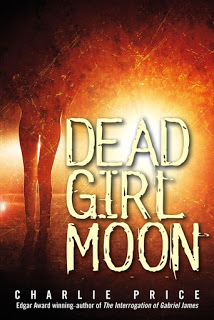
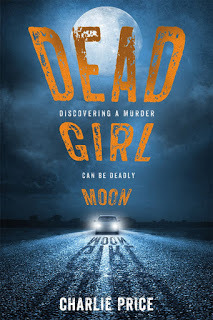
Finally, I don't want to talk too much about the redesign of Charlie Price's Dead Girl Moon aside from noting that this is another interesting example of new covers moving away from having anything resembling a real human model on the cover. Both covers convey the mystery here without much problem, though their color schemes and their execution of design differ.
Also interesting to me is that there's been a pretty sizable chunk of time between the hardcover's initial release -- October 30, 2012 -- and when the paperback will hit shelves -- October 20, 2015. Generally, though not always, paperbacks tend to hit shelves about a year after their hardcovers come out. This can change depending upon a number of things, including a book's popularity. That's why books like Fangirl and The Fault in Our Stars had a good chunk of time between their hardcover edition and paperback. While I had a copy of Dead Girl Moon when it originally came out, I'm curious about the story here. Did it sell really well? Or, as I suspect the case may be, is the market right now a little bit stronger for these types of stories, so the holdup was to make sure it'd hit at the right time? That's a question that may never be answered.
Both covers are fine, but again, the removal of actual people and models in this batch of redesigns really strikes me as noteworthy.







 Related StoriesHardcover to Paperback Makeovers: 5 Changes To ConsiderColor Me Purple: YA Covers Featuring Shades of Plum2015 YA Book Cover Trends: Part II
Related StoriesHardcover to Paperback Makeovers: 5 Changes To ConsiderColor Me Purple: YA Covers Featuring Shades of Plum2015 YA Book Cover Trends: Part II
August 6, 2015
This Week at Book Riot
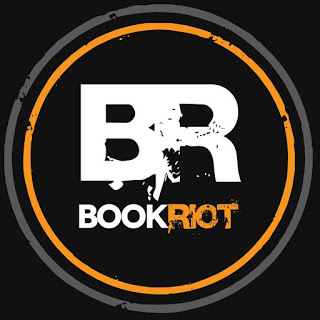
Over on Book Riot this week (...and last week, as I totally forgot to round them up):
For 3 On a YA Theme, I talked about rock stars and the rock star life in YA fiction, as well as YA books set in space. For some reason, despite my current obsession with Pluto, two of the three space books are about the moon. I talked about a handful of books that help me reignite my creativity when I'm feeling like I'm in a lull.
Here's a look at how the Some Girls Are book donation drive is going so far. I'm...blown away. If you want to help get this book into the hands of the West Ashley High School students, here are all of the details.
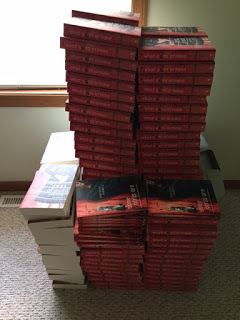
I had to have my post office box mail forward to my home address, too, since making the trip every day to carry home boxes and envelopes was getting tricky. That's a pretty great thing.
Thanks to everyone who generously reached out to help. We're doing right by these kids, and they're going to know they have people who care deeply about them in their very own community.







 Related StoriesThis Week at Book RiotRecently at Book RiotThis Week at Book Riot and Elsewhere
Related StoriesThis Week at Book RiotRecently at Book RiotThis Week at Book Riot and Elsewhere
August 5, 2015
Committing to Diversity When You’re White: A Primer
I used to read pretty white. And honestly, despite paying a lot of attention to what I’m reading, I still read a lot of white people. My goal is roughly 1/3 of my books being written by people of color this year, and though I think I am on target — half of the books I read in July were by authors of color — I know 1/3 is still a small target.
Making a commitment to diversity as a white person is hard, but it’s essential. For people like me who are gatekeepers in some capacity, it’s vital to be aware of the entirety of the world around you, not just your immediate space.
Intersectionality is essential. I’m privileged, and I have no problem saying as much. I’m white, able bodied, cis gendered, and heterosexual. I fall on the lower end of middle class, but I can pay all my bills and afford the small things I want in life without worrying how dinner will get on the table. While I’ve got mental illness to contend with, I’m able to afford medical care and treatment to make them manageable. The biggest roadblock for me anywhere is that I’m female and that I’m fat (a social disadvantage that yes, indeed, has ramifications, but it’s not insurmountable). I take it as my responsibility, then, with this level of privilege to make sure I shut up and listen to those dealing with any disadvantages I don’t have. Black women are faced with racism and sexism, and if they’re queer, that’s a third intersection of disadvantage they contend with. It’s not feminism or being an ally to only consider one of those aspects as societal disadvantage. The challenges are amplified through those intersections.
I’m not an expert by any means, and there are plenty of people who have written about this, but because race and consciousness of race have been on my mind lately, I thought it would be worthwhile to write a quick and dirty primer to better committing to a mindset that thinks about, embraces, and promotes diverse voices, creators, and writing. Many of these ideas can be applied across topics, too; that is, if you want to be a better reader or ally to the LGBTQIA community, many of these should be applicable, as well.
1. Set Reading Challenges
I’m 100% conscious of who and what I am reading. At first, this was tough. I was used to picking up whatever I wanted, whenever I wanted. But when I became conscious of who I was reading, things began to change. It wasn’t that I had to sit and research the background of the author of any book I considered reading. Rather, as I began reading more diversely, I naturally gravitated toward more diverse reading.
At some point, this clicks.
One easy way to better diversify your reading is to set a challenge for yourself. My goal is 1/3 of my books being written by people of color. It might sound daunting to do the math here, but it’s not: that’s one out of every three books. And when you start noticing that every third book you read is written by an author of color, you begin to just pick up books by authors of color when you’re doing your book shopping or borrowing from the library.
This is, of course, challenging when you’re faced with the realities of a world where authors of color aren’t as prominent or advertised or marketed the way white (especially male) authors are. In those cases, go to those authors of color you know and read through their backlist. Jacqueline Woodson, for example, has a marvelous backlist. Same with Walter Dean Myers.
Likewise, really pay attention to debut authors. When debut groups begin popping up for each new year in YA, I look through the author lists and pay special attention to those who identify as authors of color. I give those books priority because I know how many challenges are already present, on top of being a debut.
Here is the thing with this, though: you can’t pride yourself on being open and aware of who you’re reading. It cannot be your selling point and it certainly doesn’t make you an expert when you’re white. Rather, you need to do this because you need to do this. I read diversely because it’s my responsibility to do so; setting up parameters is how I keep myself in check. No one is holding me accountable here except myself, and I’m not going to ever expect another person to pat me on the back nor congratulate me for doing what I am responsible for doing.
2. Diversify the voices in your every day life
If you’re on social media, look at who it is you’re following. Do all of the people look the same? Sound the same?
Are they all white?
I follow a broad spectrum of people in my social media life. I don’t keep the same people on all social media accounts, either — I follow some people in one place, some in another, and yet more in other places. This makes sense for me and how I work with and within social media.
I don’t interact with all of the people I follow, in part because my responsibility as a white person in most cases is to shut up and listen. With racial tensions high in this country, I want to know what it is people who aren’t white have to say about it. I want to listen, rather than talk, because I have been granted so much permission to talk throughout my life. The history I learned in school — while progressive, especially in college — still was written from the perspective of white people doing the right things for and by the minds of white people. Black history was a subset of a history class once in a while, or it was an elective you could take. I remember zero classes on Latino/a history, Japanese history, Indian history, or the role of Native Americans through the course of American history. Women’s history lessons were very white, as well, even when relegated to elective, once-in-a-while when-we-have-time sessions.
I’ve heard enough of that. It’s my responsibility as an adult to educate myself, and in doing so, I sit back and listen. If I have a question from something that a person of color says, then it’s also my responsibility to do research about it.
No one is responsible for my education but me.
What’s amazing is that when you begin listening to more diverse voices through the course of your every day life, the more you also gravitate towards reading more diversely because you want to and need to better educate yourself.
3. Amplify diverse voices and perspectives
Something I am conscious of, and I know that Kimberly here is, too, is that when we write a book list or create a genre guide, we do our research before reinventing the wheel. There are so many people writing incredible blog posts and creating great resources for readers that we’d be dumb not to take advantage of that work and share it with our readers. I try to do the same thing on Book Riot, especially when I write about diverse issues.
One of the most annoying things for me to see is when a white person, especially someone with a large platform, misses an opportunity to amplify diverse voices when being asked for recommendations for reading. Is it that hard to find a person of color who has written a killer book list on diverse urban fantasy? Nope. Is it hard to find a person of color who has developed a list of comics creators of color? Nope. What about lists of diverse YA books created by authors of color? Also nope.
The reason this matters is because no matter what you’re doing, you’re probably not the first to do it. And more, it was probably — and continues to be done — by someone of color first. Don’t shout over them. Instead, give their voices the opportunity to be heard before sharing yours.
The more resources that other people have at their finger tips, the more exposure artists and authors of color are able to get that they might not otherwise get. It’s simple. Blog readers don’t read everything on the internet, so for bloggers especially, taking the ten minutes to do research before diving into a post can be hugely beneficial to those voices that you take the time to link to. They are given new audiences, and then those new readers have a new go-to resource to help better educate themselves, to help hear more diverse voices, and in turn, read more diversely.
4. Put your money where your mouth is
I do not buy books by white men.
I read them, absolutely, but I make a point to only check them out from the library, rather than plunk down $20 or $30 for one of their books.
Instead, when I go out to buy books, I make sure I am only buying the work of people of color or women. This is because that $20 or $30 makes a much larger difference to their career than it does to the career of a white man, already benefitting from a system where he’s a winner.
And here’s the best part: I have yet to be disappointed in this shopping experience. It forces me to look harder, to browse more deeply, and to pick up books that may otherwise fall outside my comfort zone.
We all know, or at least should know, that what’s available in the chain bookstores is hardly representative of what’s actually being published. The most diverse section in the YA area is, without much question, the non-fiction area — which is also the most undermarketed, under seen, section of the store.
So sometimes, what putting your money where your mouth is means walking out of a bookstore without buying a book and instead, going home, doing some research, and buying the book online. I keep a running list of titles that catch my attention; when I can’t find something in store, I’ll pick up one of those titles online later.
Like the other tips on this list, this particular one makes a huge impact. It might not seem like buying one book by an author of color matters, but that’s one sale not otherwise had, and it’s a book that then gets put into your reading rotation, which then becomes a book you talk about, which then amplifies a voice which otherwise might not be heard, which then encourages more people to pick up the book.
It does matter.
5. Be prepared to be wrong — and be okay with that
The biggest, most important, and yet hardest commitment to make when you choose to be a better ally is that you’re going to be wrong and you’re going to be called out for it. It absolutely hurts. But being told you’ve misstepped in something you’ve said or shared or that you could do better is absolutely nothing in comparison to being told your life is wrong or has less value than a white person’s.
A few years ago, an author of color contacted me privately about a review I wrote that hurt her. I didn’t say anything offensive, but I conflated discrimination against fat people with racism. Both are types of discrimination, but she noted in conflating the two, I didn’t take into account the long-standing history of racism.
And you know, she was right.
That was not my intention in the review, but when I went back with her concerns in my mind, I 100% saw what she saw, and I realized it mattered to do right. I apologized profusely, I listened to her criticism, and then I committed to do better. She in no way owed me the head’s up, and she in no way owed me a kind private email about it. But she did those things.
I’m often wrong on a lot of things. But I am comfortable enough with that. I’d rather try and screw up than not try at all. This has made me many enemies over the course of my life, but I believe in my convictions strongly enough that I know those who choose to walk away weren’t really there with me from the beginning anyway.
6. Read non-fiction, essays, and other personal works by people of color
This is a bit repetitive of numbers 1 through 3, but it’s important enough to pull out on its own. We’re in an amazing age of communication and sharing, especially when it comes to long form essays and personal anecdotes on the internet.
The number of people of color who are given platforms remains small, especially compared to white people and white men especially, but those voices? Listen to them. Read them. Share them. Engage with them thoughtfully and purposefully. Sometimes the best course of action is to share them and offer none of your own insight or reaction out loud. Rather, the important take aways are the internal ones that you and you alone wrestle with.
If you don’t know where to start — and this can be hard because knowing where to begin is intimidating when you’ve never purposefully set out to change your reading and thinking habits as an adult — some suggestions include The New Jim Crow by Michelle Alexander, Between the World and Me by Ta-Nehisi Coats, Citizen by Claudia Rankine, and Bad Feminist by Roxane Gay. Once you read one of these books, finding more isn’t difficult and it becomes almost imperative. Because these are the stories we don’t hear on a daily basis, and they’re stories and insights we simply do not get in our white media.
Once you read more non-fiction, once you dedicate yourself to listening to these personal stories online and off, and once you begin investing time and money into diverse reading, you will change your life and you will change your approach to interacting with different people in your life. Writers don’t share their stories or perspectives just for fun. They do it because it is important and because if they don’t, no one will do it for them.
When you open yourself up to the possibility you are wrong, that you’re biased, or that you could do better, you will do better.
Likewise, when you open yourself up to those possibilities, you better believe the stories people of color tell you, you better believe their life experiences, and you’re better able to be an ally to them, rather than an ally for them.
Because here’s the thing: I am only responsible for the truths in my life, and the truths in my life are that I’m pretty privileged. And it’s by being privileged I could choose to ignore the truths of other people’s lives. But I can’t.
I believe everyone’s truth matters, and I want to better understand those truths.
Looking for more ways you can be a better advocate for diverse voices and stories? Here’s a round-up of other people talking about actionable and mental steps you can take. These are not posts on why, because there’s no reason to even ask the question. They’re posts on the how:
Angie talks about the role libraries and librarians play in diversity, how they can be advocates for diverse books, and how readers can work with their local libraries to raise awareness.
Justina Ireland shares non-negotiable random thoughts on diversity. Also, her recent post on why you’re not really colorblind is required reading.
Leonicka’s #DiverseCanLit chats are all Storifyed and organized by topic. These are must-reads.
Malinda Lo’s look at perceptions of diversity in professional reviews should be required reading for anyone considering reviewing books, either professionally or as an amateur. I think about this series of posts every time I read a book that’s not about a white girl/boy.
On Book Riot, the “Diversity FAQ” series covers a lot of the whys and hows of diversity.
Aarti talks about reading diversely AND authentically — a series of really worthwhile comments about how reading a single experience doesn’t tell a whole story.
I pulled together a list of bloggers, Book Tubers, and Tumblr book fans who are people of color.
Edi Campbell has built a tremendous collection of diversity resources, ranging from publishers who focus on diverse titles to professional associations for librarians with a diverse focus, and more.
Rebekah Weatherspoon talks about taking actual action behind the talk of reading and being more open to diversity.
Read and share the books on this beautiful and thoughtful inclusive summer reading list.








Committing to Diversity When You're White: A Primer
Making a commitment to diversity as a white person is hard, but it's essential. For people like me who are gatekeepers in some capacity, it's vital to be aware of the entirety of the world around you, not just your immediate space.
Intersectionality is essential. I'm privileged, and I have no problem saying as much. I'm white, able bodied, cis gendered, and heterosexual. I fall on the lower end of middle class, but I can pay all my bills and afford the small things I want in life without worrying how dinner will get on the table. While I've got mental illness to contend with, I'm able to afford medical care and treatment to make them manageable. The biggest roadblock for me anywhere is that I'm female and that I'm fat (a social disadvantage that yes, indeed, has ramifications, but it's not insurmountable). I take it as my responsibility, then, with this level of privilege to make sure I shut up and listen to those dealing with any disadvantages I don't have. Black women are faced with racism and sexism, and if they're queer, that's a third intersection of disadvantage they contend with. It's not feminism or being an ally to only consider one of those aspects as societal disadvantage. The challenges are amplified through those intersections.
I'm not an expert by any means, and there are plenty of people who have written about this, but because race and consciousness of race have been on my mind lately, I thought it would be worthwhile to write a quick and dirty primer to better committing to a mindset that thinks about, embraces, and promotes diverse voices, creators, and writing. Many of these ideas can be applied across topics, too; that is, if you want to be a better reader or ally to the LGBTQIA community, many of these should be applicable, as well.
1. Set Reading Challenges
I'm 100% conscious of who and what I am reading. At first, this was tough. I was used to picking up whatever I wanted, whenever I wanted. But when I became conscious of who I was reading, things began to change. It wasn't that I had to sit and research the background of the author of any book I considered reading. Rather, as I began reading more diversely, I naturally gravitated toward more diverse reading.
At some point, this clicks.
One easy way to better diversify your reading is to set a challenge for yourself. My goal is 1/3 of my books being written by people of color. It might sound daunting to do the math here, but it's not: that's one out of every three books. And when you start noticing that every third book you read is written by an author of color, you begin to just pick up books by authors of color when you're doing your book shopping or borrowing from the library.
This is, of course, challenging when you're faced with the realities of a world where authors of color aren't as prominent or advertised or marketed the way white (especially male) authors are. In those cases, go to those authors of color you know and read through their backlist. Jacqueline Woodson, for example, has a marvelous backlist. Same with Walter Dean Myers.
Likewise, really pay attention to debut authors. When debut groups begin popping up for each new year in YA, I look through the author lists and pay special attention to those who identify as authors of color. I give those books priority because I know how many challenges are already present, on top of being a debut.
Here is the thing with this, though: you can't pride yourself on being open and aware of who you're reading. It cannot be your selling point and it certainly doesn't make you an expert when you're white. Rather, you need to do this because you need to do this. I read diversely because it's my responsibility to do so; setting up parameters is how I keep myself in check. No one is holding me accountable here except myself, and I'm not going to ever expect another person to pat me on the back nor congratulate me for doing what I am responsible for doing.
2. Diversify the voices in your every day life
If you're on social media, look at who it is you're following. Do all of the people look the same? Sound the same?
Are they all white?
I follow a broad spectrum of people in my social media life. I don't keep the same people on all social media accounts, either -- I follow some people in one place, some in another, and yet more in other places. This makes sense for me and how I work with and within social media.
I don't interact with all of the people I follow, in part because my responsibility as a white person in most cases is to shut up and listen. With racial tensions high in this country, I want to know what it is people who aren't white have to say about it. I want to listen, rather than talk, because I have been granted so much permission to talk throughout my life. The history I learned in school -- while progressive, especially in college -- still was written from the perspective of white people doing the right things for and by the minds of white people. Black history was a subset of a history class once in a while, or it was an elective you could take. I remember zero classes on Latino/a history, Japanese history, Indian history, or the role of Native Americans through the course of American history. Women's history lessons were very white, as well, even when relegated to elective, once-in-a-while when-we-have-time sessions.
I've heard enough of that. It's my responsibility as an adult to educate myself, and in doing so, I sit back and listen. If I have a question from something that a person of color says, then it's also my responsibility to do research about it.
No one is responsible for my education but me.
What's amazing is that when you begin listening to more diverse voices through the course of your every day life, the more you also gravitate towards reading more diversely because you want to and need to better educate yourself.
3. Amplify diverse voices and perspectives
Something I am conscious of, and I know that Kimberly here is, too, is that when we write a book list or create a genre guide, we do our research before reinventing the wheel. There are so many people writing incredible blog posts and creating great resources for readers that we'd be dumb not to take advantage of that work and share it with our readers. I try to do the same thing on Book Riot, especially when I write about diverse issues.
One of the most annoying things for me to see is when a white person, especially someone with a large platform, misses an opportunity to amplify diverse voices when being asked for recommendations for reading. Is it that hard to find a person of color who has written a killer book list on diverse urban fantasy? Nope. Is it hard to find a person of color who has developed a list of comics creators of color? Nope. What about lists of diverse YA books created by authors of color? Also nope.
The reason this matters is because no matter what you're doing, you're probably not the first to do it. And more, it was probably -- and continues to be done -- by someone of color first. Don't shout over them. Instead, give their voices the opportunity to be heard before sharing yours.
The more resources that other people have at their finger tips, the more exposure artists and authors of color are able to get that they might not otherwise get. It's simple. Blog readers don't read everything on the internet, so for bloggers especially, taking the ten minutes to do research before diving into a post can be hugely beneficial to those voices that you take the time to link to. They are given new audiences, and then those new readers have a new go-to resource to help better educate themselves, to help hear more diverse voices, and in turn, read more diversely.
4. Put your money where your mouth is
I do not buy books by white men.
I read them, absolutely, but I make a point to only check them out from the library, rather than plunk down $20 or $30 for one of their books.
Instead, when I go out to buy books, I make sure I am only buying the work of people of color or women. This is because that $20 or $30 makes a much larger difference to their career than it does to the career of a white man, already benefitting from a system where he's a winner.
And here's the best part: I have yet to be disappointed in this shopping experience. It forces me to look harder, to browse more deeply, and to pick up books that may otherwise fall outside my comfort zone.
We all know, or at least should know, that what's available in the chain bookstores is hardly representative of what's actually being published. The most diverse section in the YA area is, without much question, the non-fiction area -- which is also the most undermarketed, under seen, section of the store.
So sometimes, what putting your money where your mouth is means walking out of a bookstore without buying a book and instead, going home, doing some research, and buying the book online. I keep a running list of titles that catch my attention; when I can't find something in store, I'll pick up one of those titles online later.
Like the other tips on this list, this particular one makes a huge impact. It might not seem like buying one book by an author of color matters, but that's one sale not otherwise had, and it's a book that then gets put into your reading rotation, which then becomes a book you talk about, which then amplifies a voice which otherwise might not be heard, which then encourages more people to pick up the book.
It does matter.
5. Be prepared to be wrong -- and be okay with that
The biggest, most important, and yet hardest commitment to make when you choose to be a better ally is that you're going to be wrong and you're going to be called out for it. It absolutely hurts. But being told you've misstepped in something you've said or shared or that you could do better is absolutely nothing in comparison to being told your life is wrong or has less value than a white person's.
A few years ago, an author of color contacted me privately about a review I wrote that hurt her. I didn't say anything offensive, but I conflated discrimination against fat people with racism. Both are types of discrimination, but she noted in conflating the two, I didn't take into account the long-standing history of racism.
And you know, she was right.
That was not my intention in the review, but when I went back with her concerns in my mind, I 100% saw what she saw, and I realized it mattered to do right. I apologized profusely, I listened to her criticism, and then I committed to do better. She in no way owed me the head's up, and she in no way owed me a kind private email about it. But she did those things.
I'm often wrong on a lot of things. But I am comfortable enough with that. I'd rather try and screw up than not try at all. This has made me many enemies over the course of my life, but I believe in my convictions strongly enough that I know those who choose to walk away weren't really there with me from the beginning anyway.
6. Read non-fiction, essays, and other personal works by people of color
This is a bit repetitive of numbers 1 through 3, but it's important enough to pull out on its own. We're in an amazing age of communication and sharing, especially when it comes to long form essays and personal anecdotes on the internet.
The number of people of color who are given platforms remains small, especially compared to white people and white men especially, but those voices? Listen to them. Read them. Share them. Engage with them thoughtfully and purposefully. Sometimes the best course of action is to share them and offer none of your own insight or reaction out loud. Rather, the important take aways are the internal ones that you and you alone wrestle with.
If you don't know where to start -- and this can be hard because knowing where to begin is intimidating when you've never purposefully set out to change your reading and thinking habits as an adult -- some suggestions include The New Jim Crow by Michelle Alexander, Between the World and Me by Ta-Nehisi Coats, Citizen by Claudia Rankine, and Bad Feminist by Roxane Gay. Once you read one of these books, finding more isn't difficult and it becomes almost imperative. Because these are the stories we don't hear on a daily basis, and they're stories and insights we simply do not get in our white media.
Once you read more non-fiction, once you dedicate yourself to listening to these personal stories online and off, and once you begin investing time and money into diverse reading, you will change your life and you will change your approach to interacting with different people in your life. Writers don't share their stories or perspectives just for fun. They do it because it is important and because if they don't, no one will do it for them.
When you open yourself up to the possibility you are wrong, that you're biased, or that you could do better, you will do better.
Likewise, when you open yourself up to those possibilities, you better believe the stories people of color tell you, you better believe their life experiences, and you're better able to be an ally to them, rather than an ally for them.
Because here's the thing: I am only responsible for the truths in my life, and the truths in my life are that I'm pretty privileged. And it's by being privileged I could choose to ignore the truths of other people's lives. But I can't.
I believe everyone's truth matters, and I want to better understand those truths.
Looking for more ways you can be a better advocate for diverse voices and stories? Here's a round-up of other people talking about actionable and mental steps you can take. These are not posts on why, because there's no reason to even ask the question. They're posts on the how:
Angie talks about the role libraries and librarians play in diversity, how they can be advocates for diverse books, and how readers can work with their local libraries to raise awareness.
Justina Ireland shares non-negotiable random thoughts on diversity. Also, her recent post on why you're not really colorblind is required reading.
Leonicka's #DiverseCanLit chats are all Storifyed and organized by topic. These are must-reads.
Malinda Lo's look at perceptions of diversity in professional reviews should be required reading for anyone considering reviewing books, either professionally or as an amateur. I think about this series of posts every time I read a book that's not about a white girl/boy.
On Book Riot, the "Diversity FAQ" series covers a lot of the whys and hows of diversity.
Aarti talks about reading diversely AND authentically -- a series of really worthwhile comments about how reading a single experience doesn't tell a whole story.
I pulled together a list of bloggers, Book Tubers, and Tumblr book fans who are people of color.
Edi Campbell has built a tremendous collection of diversity resources, ranging from publishers who focus on diverse titles to professional associations for librarians with a diverse focus, and more.
Rebekah Weatherspoon talks about taking actual action behind the talk of reading and being more open to diversity.
Read and share the books on this beautiful and thoughtful inclusive summer reading list.







 Related Stories7 More 2015 YA Books with Diversity on the CoverOn Grief and Finding Love Unexpected: The Boy in the Black Suit by Jason Reynolds and The Carnival at Bray by Jessie Ann FoleyBoy Meets Girl: Guest Post by Lamar Giles (author of Fake ID and Endangered)
Related Stories7 More 2015 YA Books with Diversity on the CoverOn Grief and Finding Love Unexpected: The Boy in the Black Suit by Jason Reynolds and The Carnival at Bray by Jessie Ann FoleyBoy Meets Girl: Guest Post by Lamar Giles (author of Fake ID and Endangered)
August 4, 2015
The Warrior, the Lover, and the Cultist: Three Brief Reviews
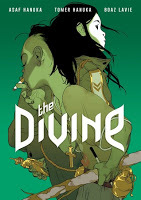
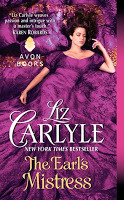
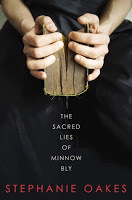
The Divine by Asaf Hanuka, Tomer Hanuka, and Boaz Lavie
The art in this - done by twins Asaf and Tomer Hanuka - is gorgeous, with really rich colors. The story it helps tell, though, isn't well-crafted. It aims to be a sort of mish-mash of modern war story and ancient magic, but it comes off as kind of half-baked. It's ostensibly about child soldiers in Thailand (the story takes place in a fictional Asian country called Quanlom), but I only knew that because of the creators' afterword, which is a good deal more resonant than their story. The protagonist is kind of dull, his best friend is a caricature, and the central conflict about two twin Quanlom kids committing acts of violence for their country (helped along by some magical powers) never gels into anything meaningful. I wish I liked this one better; it's a fine purchase for adult collections (for the art especially), but a bit of a letdown overall.
The Earl's Mistress by Liz Carlyle
I read a lot of historical romance, and I enjoy pretty equally books that are on the tame side as well as those that are rather spicy. This one is definitely on the spicy side. It may be the spiciest historical romance I've yet read, which is saying something. Isabella Aldridge goes to interview for the position of governess with the Earl of Hepplewood, and he turns her down, but offers her a different role instead, which you can guess by the title of the book. He's kind of skeezy in the beginning, and the book gives off a bit of a Fifty Shades vibe, though the earl isn't really tortured like Christian is supposed to be. He gets better later in the story, and this isn't the only historical romance guilty of making its hero a little too unlikeable at the beginning. The developing affection between the two leads is done well, though. The narration by Carolyn Morris is good and the book was enjoyable enough despite its flaws - I checked out a few others by Carlyle on its merits.
The Sacred Lies of Minnow Bly by Stephanie Oakes
Kelly reviewed this one not too long ago, which made me want to read it myself. So now you have two people (at least) telling you that it's absolutely worth a read. I normally shy away from stories set primarily in prison, but this one wasn't all about fights and how awful prison life is (which just makes me feel sad). It was a very personal story about Minnow and how she comes to terms with what happened with the cult and what she did to land herself in the detention center (refreshingly, she actually did do what she was convicted of doing, which we learn straight off). Minnow emerges at the end of the story a much stronger person with a stronger voice and a better understanding of what she wants from her life. What really made this story stand out for me, though, was the writing. I read a lot of YA books with fairly straightforward writing styles, good for much of the fast-paced action-oriented stories I enjoy. It was nice to read a book by an author who clearly enjoys playing with language - and is good at it - for a change.
Books received from the publisher, except for the Carlyle, which I borrowed from the library.







 Related StoriesRecent Reads: Immaculate by Katelyn Detweiler, Devoted by Jen Mathieu, and The Sacred Lies of Minnow Bly by Stephanie OakesThe Fixer by Jennifer Lynn BarnesRomance Roundup
Related StoriesRecent Reads: Immaculate by Katelyn Detweiler, Devoted by Jen Mathieu, and The Sacred Lies of Minnow Bly by Stephanie OakesThe Fixer by Jennifer Lynn BarnesRomance Roundup
August 3, 2015
Fuzzy Mud by Louis Sachar
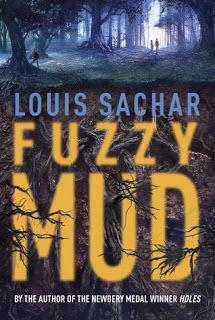 I received Louis Sachar's latest middle grade,
Fuzzy Mud
, in the mail a couple weeks ago and deliberately read it before I looked up any professional reviews. It's a given I would purchase it for my library, but I wanted to make up my mind as to its quality without other librarians telling me about it first. This is unusual for me since I normally read (or at least skim) a copious amount of reviews for every book I read before I dive in. But I'm glad I went into this one pretty blind. (In case you'd like to know now, it's gotten positive reviews from all major trade journals, with a starred review from Booklist.)
I received Louis Sachar's latest middle grade,
Fuzzy Mud
, in the mail a couple weeks ago and deliberately read it before I looked up any professional reviews. It's a given I would purchase it for my library, but I wanted to make up my mind as to its quality without other librarians telling me about it first. This is unusual for me since I normally read (or at least skim) a copious amount of reviews for every book I read before I dive in. But I'm glad I went into this one pretty blind. (In case you'd like to know now, it's gotten positive reviews from all major trade journals, with a starred review from Booklist.)My verdict: It's good, but it's not great. It's going to be compared to Holes; of course it is. In comparison to that nearly perfect middle grade book, Fuzzy Mud is not quite as deftly plotted, its characters not as rich. It feels a little thin. Taken separately from Holes, it's still a worthwhile read with a great middle grade voice, but even then, I wouldn't call it a great book. It is a very good one, though.
Tamaya Dhilwaddi is in the 5th grade, and her mother forces her to walk to and from school with 7th-grader Marshall Walsh. They're supposed to avoid the woods, but one day Marshall shoots right for it, telling Tamaya angrily that he knows a shortcut. Unbeknownst to her, Marshall is being bullied by Chad, another 7th grader, who has threatened to beat him up on his way home that day. Marshall hopes to avoid the bully, and he doesn't particularly want to explain it to Tamaya, who rushes to keep up with him.
It turns out there's a good reason to avoid the woods. Tamaya stumbles across something she can only call "fuzzy mud," because that's exactly what it looks like. And Chad finds them anyway. In their rush to escape the bully, Tamaya throws some of the fuzzy mud into Chad's face. They go home and try to forget the incident - except Tamaya now has a strange rash that won't go away.
As Tamaya's rash worsens, the school notices that Chad hasn't been seen in a while. Tamaya is stricken, knowing that while she just got some of the fuzzy mud on her hands, Chad got it in his face. Marshall won't tell anyone that Chad is in the woods, but Tamaya knows she has to go see if he's still there, if he's still alive. By now, the school is on lockdown, but Tamaya manages to get away. This time, Marshall follows her.
The story is told from Tamaya's and Marshall's alternating points of view, though Tamaya's is a bit more memorable. Interspersed are transcripts from a national hearing about the fuzzy mud, which takes place sometime after the other events of the book and show how catastrophically things escalated. There are also some ominous mathematical equations whose sums demonstrate the same thing in a different way. Both plot devices are well-used and very Louis Sachar.
Just what exactly the fuzzy mud is unravels over the course of this pretty short (under 200 pages) book. It's a cool and somewhat unsettling concept having to do with clean energy and more broadly environmentalism and scarcity of resources - plus some animals rights issues, possibly, and the science of mutation. These are absolutely concepts kids can get, and placing them in the context of bullying and an adventure in the woods makes them digestible and interesting. The book has a dash of Wayside School since an understanding of exponents is essential to the story. It's a slightly weird book (and a funny one), perhaps not as weird as Holes, but it has the same sort of flavor. It's definitely a Sachar book, with writing that speaks well to a middle graders. He just knows how to write for this audience.
Where I felt a little let down was the overall thinness of the story. Middle grade books definitely don't have to be (and most shouldn't be) doorstoppers, but 192 pages feels not quite long enough to tell this story adequately. There are a lot of big ideas presented very quickly, particularly in the sections with the hearing/debriefing of the fuzzy mud incident. And because these sections split up the adventure in the woods at several points, Tamaya and Marshall's story feels a bit scant, too. I felt that the bullying subplot with Chad was a little underdeveloped as well - its resolution felt too pat and a bit touchy-feely, with Chad's about-face coming easily and quickly.
These weaknesses aside, this is a unique, fun, and interesting book for kids from a writer who excels at writing middle grade. There will be high demand and the concept should make it an easy sell.
Review copy received from the publisher. Fuzzy Mud publishes today.







 Related StoriesWhat I'm Reading NowRecent Reads: Immaculate by Katelyn Detweiler, Devoted by Jen Mathieu, and The Sacred Lies of Minnow Bly by Stephanie OakesThe Fixer by Jennifer Lynn Barnes
Related StoriesWhat I'm Reading NowRecent Reads: Immaculate by Katelyn Detweiler, Devoted by Jen Mathieu, and The Sacred Lies of Minnow Bly by Stephanie OakesThe Fixer by Jennifer Lynn Barnes
August 2, 2015
On The Radar: 10 Books for August
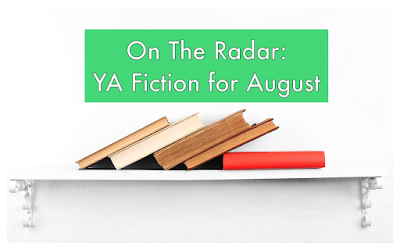
One of the most popular posts I do over at Book Riot is the round-up of upcoming YA fiction titles, and one of the most popular questions I seem to get on Twitter and in my inboxes is "what should I be looking out for in YA?" For a lot of readers, especially those who work with teens either in classrooms or in libraries, knowing what's coming out ahead of time is valuable to get those books into readers' hands before they even ask.
Each month, I'll call out between 8 and 12 books coming out that should be on your radar. These include books by high-demand, well-known authors, as well as some up-and-coming and debut authors. They'll be across a variety of genres, including diverse titles and writers. Not all of the books will be ones that Kimberly or I have read, nor will all of them be titles that we're going to read and review. Rather, these are books that readers will be looking for and that have popped up regularly on social media, in advertising, in book mail, and so forth. It's part science and part arbitrary and a way to keep the answer to "what should I know about for this month?" quick, easy, and under $300 (doable for smaller library budgets especially).
For August, here are 10 titles to have on your radar. All descriptions are from WorldCat, and I've noted why it should be included.
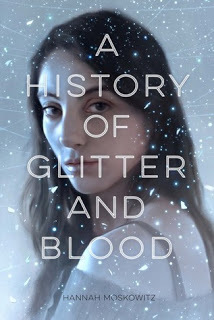
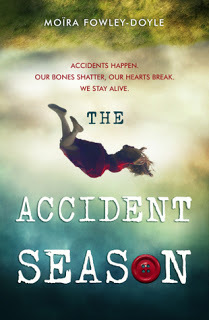
A History of Glitter and Blood by Hannah Moskowitz: Beckan, an immortal teenage fairy, and Tier, a young activist, are on opposite sides of a war, but strike up an unlikely friendship anyway.
Why: I have read nothing but positive reviews of this title, and Moskowitz continues to emerge in the YA world as an author to watch. This is her second release this year, and it's in a completely different genre than Not Otherwise Specifed.
The Accident Season by Moira Fowley-Doyle: Every October Cara and her family become mysteriously and dangerously accident-prone, but this year, the year Cara, her ex-stepbrother, and her best friend are 17, is when Cara will begin to unravel the accident season's dark origins.
Why: This one has had a ton of publicity and press, and it sounds like a fun, different supernatural tale.
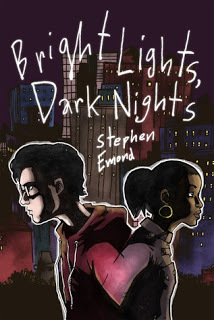
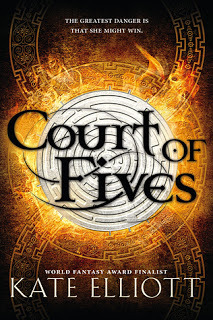
Bright Lights, Dark Nights by Stephen Emond: Walter Wilcox's first love, Naomi, happens to be African American, so when Walter's policeman father is caught in a racial profiling scandal, the teens' bond and mutual love of the Foo Fighters may not be enough to keep them together through the pressures they face at school, at home, and online.
Why: I read this one, and while it's imperfect, it's timely and should evoke some great discussion. The romance here is well-drawn and through the perspective of Walter, which makes it stand out in the current YA world. This is also a hybrid novel with illustrations, so it has tremendous appeal.
Court of Fives by Kate Elliott: When a scheming lord tears Jess's family apart, she must rely on her unlikely friendship with Kal, a high-ranking Patron boy, and her skill at Fives, an intricate, multi-level athletic competition that offers a chance for glory, to protect her Commoner mother and mixed-race sisters and save her father's reputation.
Why: I've read nothing but great reviews of this one, and it's had some good publicity. Elliott is no novice in the SFF world, but this is her first foray into YA.
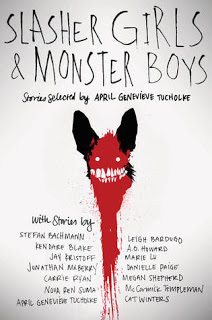
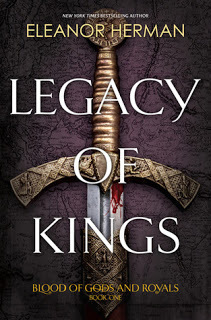
Slasher Girls & Monster Boys edited by April Genevieve Tucholke: Inspired by classic tales and films, a collection of fourteen short stories ranging from bloody horror, to psychological thrillers, to supernatural creatures, to unsettling, all-too-possible realism, by acclaimed YA authors of every genre.
Why: Again, really positive reviews of this one have piqued my own curiosity, as well as a stellar lineup of writers with short horror stories. There's always room for more horror in YA, and in this instance, a collection of short stories is a unique way to offer it. With the names included, an awesome opportunity for new readers to discover the longer works by authors' stories they enjoy, too.
Legacy of Kings by Eleanor Herman: Katerina, on a mission to kill the queen, falls in love with Alexander, Prince of Macedonia. Jacob will go to unthinkable lengths to win Katerina, even if it means having to compete with Hephaestion, a murderer sheltered by the prince. And far across the sea, Zofia, a Persian princess and Alexander's unmet betrothed, wants to alter her destiny by seeking the famed and deadly Spirit Eaters.
Why: Aside from the big push this one has gotten from the publisher, adults might be familiar with the author, who has written the adult non-fiction titles Sex With Kings and Sex With The Queen. She knows her stuff, and I suspect it'll be interesting to see her take that knowledge and apply it into a YA novel.
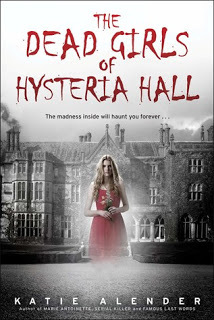
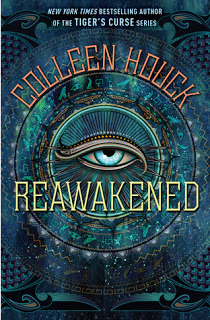
The Dead Girls of Hysteria Hall by Kate Alender: Sixteen-year-old Cordelia and her family move into the house they just inherited in Pennsylvania, a former insane asylum the locals call Hysteria Hall--unfortunately the house does not want defiant girls like Delia, so it kills her, and as she wanders the house, meeting the other ghosts and learning the dark secrets of the Hall, she realizes that she has to find a way to save her sister, parents, and perhaps herself.
Why: Again, this is a solid horror novel, and Alender has sort of carved a niche for herself here, too. She's an excellent writer of suspense and tension, and this particular novel features a smart main character who knows how horror works, so there's an extra layer of tension added therein. It plays with the tropes horror readers love in unexpected ways.
Reawakened by Colleen Houck: A visit to an Egyptian exhibit brings teen Lilliana Young face to face with a recently awakened mummy-turned-handsome-sun-god as she gets caught up in an adventure with more twists and turns than the Nile itself
Why: Houck has written a series before that did quite well, and this is the first entry into a new one. A mythology-based fantasy sounds fun and different.
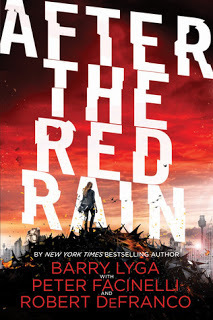
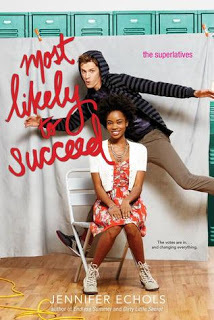
After The Red Rain by Barry Lyga, Peter Facinelli, and Robert DeFranco: Set in a future world of environmental collapse and mass poverty, where a mysterious boy named Rose discovers he possesses inhuman powers that can irrevocably change the lives of everyone on the planet.
Why: While the description really doesn't make this one sound particularly unique, look at the names on this book. They're huge and this collaborative effort has seen some good reviews.
Most Likely To Succeed by Jennifer Echols: Sawyer and Kaye fall in love despite hating each other.
Why: Weak description from WorldCat, but Echols continues to produce well-written romance-driven YA novels, and this entire series has been solid. Bonus: look at that black girl on the cover, right in the center.







 Related StoriesJune Debut YA NovelsRecent Reads: Immaculate by Katelyn Detweiler, Devoted by Jen Mathieu, and The Sacred Lies of Minnow Bly by Stephanie OakesThe Fixer by Jennifer Lynn Barnes
Related StoriesJune Debut YA NovelsRecent Reads: Immaculate by Katelyn Detweiler, Devoted by Jen Mathieu, and The Sacred Lies of Minnow Bly by Stephanie OakesThe Fixer by Jennifer Lynn Barnes
July 30, 2015
Let's Make Change Happen Right Now
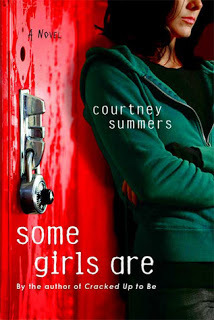
I'm not going to write a lengthy post about the removal of Courtney Summers's Some Girls Are as an optional -- OPTIONAL -- reading choice for students at West Ashley High School in Charleston, South Carolina. I'm going to instead direct you to Courtney's impassioned discussion of this challenge to her book, along with Leila Roy's commentary, and commentary from the Comic Book Legal Defense Fund.
I am a staunch advocate of intellectual freedom and have been since day one. I find it horrifying and small minded when one parent's problem with material overrides the rights of every student to have access to material that not only impacts their lives, but that they would have the opportunity to discuss and engage with under the guide of adults who care about them and who want them to KNOW that they're cared about.
To say this particular removal -- one laden with missteps and subverting policies left and right -- feels particularly brutal is an understatement.
So I'm doing something.
Thanks to a few phone calls, I was in touch with Andria Amaral at the Charleston County Library System about what could be done to get this book into the hands of the teens who want them. She feels as passionately about this as I do, as she said to me that she wants to stand at the door of the high school and pass this book out to kids. More copies of the book have been purchased for the library for their access, too.
Let's do something together with our collective reader, intellectual freedom loving power, shall we? Can we get this book into the hands of kids of West Ashley who want it?
If you are willing to buy a copy of Summers's Some Girls Are, I will send it down to Andria, who will get it into those kids hands for free.
Between now and August 17, I would love to see my house become overfilled with copies of this book. I will box them up and ship them all down to Andria that week, so she can get them into the hands of eager readers. Because Andria is also coordinating the efforts of the Cynthia Hurd memorial donations, it is easier for me to collect everything and send them down to her once, rather than have them trickle in to her.
Think this is a costly endeavor? Let me direct you to how you can participate, even if you're short on funds.
Some Girls Are is currently $1.99 on Book Outlet, and What Goes Around, which is a bind-up of Summers's Cracked Up To Be and Some Girls Are is $1. Right now, there are over 200 copies between the two of these books on Book Outlet. Let's make them all disappear.
Can you spring $1 or $2 or $10 to get this book to these kids? It seems like a cheap way to tell these teenagers that their voices -- their lives -- really do matter.
You can, of course, send a copy from anywhere. I am not going to do anything but drop them into a big box to ship out.
If you want to take part, please drop your name and email in this form, and I will email you with my mailing address to make this happen. If you cannot participate yourself, please pass this along to anyone who might want to help out.
Loading...








July 29, 2015
Prima Ballerinas: A YA Reading List
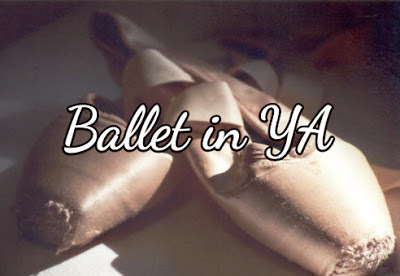
There are two things in YA that will make me pick up a book no matter what. The first are stories set in a juvenile detention facility. It's not that I love seeing bad kids; rather, it's about how these stories -- and shows like Beyond Scared Straight, which I love -- are about how adults are not giving up on teenagers who do dumb things. Rather, they're stories about how there's so much hope to make the lives of these teenagers better.
The second thing in YA that I can never get enough of is the ballet story. I used to take ballet as a kid, and I think that might be part of why. It's a dream that never was for me, despite making a pact when my best friend at age 5 that we'd grow up together and become ballerinas together.
Neither of us are ballerinas.
Because there's been a handful of ballet-themed YA on shelves this year and because it's such a perennially great topic in YA with a lot of timelessness to it (competition, drive, and dance don't change when a book is 10 years old, as opposed to brand new), I thought I'd pull together a book old booklist. All of these books, some old, some new, and some to hit shelves in the near future, include ballet as a major part of the story. Likewise, I have included non-fiction on this list because it absolutely thrills me to see that the non-fiction in YA about ballerinas we're seeing isn't about the ideal white girl dancers we are so accustomed to seeing. They're different.
All descriptions are from WorldCat unless otherwise noted. If there are other ballet themed YA books I missed, I'd love to know in the comments. And as always, I once again plea that someone write me a book about a black male dancer, a la the story of the boy in "Save The Last Dance." I want to read that story so bad. I suspect many a YA reader does, too.
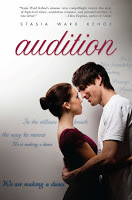
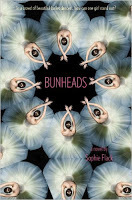
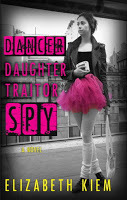
Audition by Stasia Ward Kehoe: When sixteen-year-old Sara, from a small Vermont town, wins a scholarship to study ballet in New Jersey, her ambivalence about her future increases even as her dancing improves.
Bunheads by Sophie Flack: Hannah Ward, nineteen, revels in the competition, intense rehearsals, and dazzling performances that come with being a member of Manhattan Ballet Company's corps de ballet, but after meeting handsome musician Jacob she begins to realize there could be more to her life.
Dancer, Daughter, Traitor, Spy by Elizabeth Kiem: After a harrowing defection to the United States in 1982, Russian teenager Marya and her father settle in Brooklyn, where Marya is drawn into a web of intrigue involving her gift of foresight, her mother's disappearance, and a boy she cannot bring herself to trust.
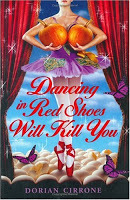
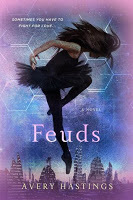
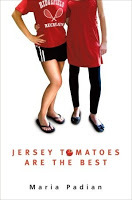
Dancing in Red Shoes Will Kill You by Doreen Cirrone: Sixteen-year-old Kayla, a ballet dancer with very large breasts, and her sister Paterson, an artist, are both helped and hindered by classmates as they confront sexism, conformity, and censorship at their high school for the arts while still managing to maintain their sense of humor.
Feuds by Avery Hastings: n 2135 Ohio, Davis Morrow, a fiercely ambitious ballerina, has been primed to be smarter, stronger, and more graceful than the lowly Imperfects but when a deadly virus, the Narxis, begins killing Davis's friends she turns to Cole, a mysterious boy with his own agenda, and their love may be the only thing that can save her world.
Jersey Tomatoes Are The Best by Maria Padian: When fifteen-year-old best friends Henry and Eve leave New Jersey, one for tennis camp in Florida and one for ballet camp in New York, each faces challenges that put her long-cherished dreams of the future to the test.
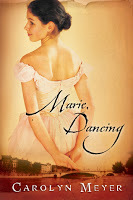
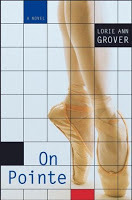
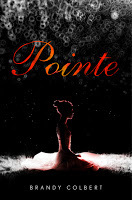
Marie, Dancing by Carolyn Meyer: A fictionalized autobiography of Marie Van Goethem, the impoverished student from the Paris Opéra ballet school who became the model for Edgar Degas's famous sculpture, "The Little Dancer."
On Pointe by Lorie Ann Grover: In this novel written in free verse, Clare and her grandfather must deal with changes in their lives when Clare's summer growth spurt threatens to end her dream of becoming a ballet dancer and her grandfather suffers a stroke.
Pointe by Brandy Colbert: Four years after Theo's best friend, Donovan, disappeared at age thirteen, he is found and brought home and Theo puts her health at risk as she decides whether to tell the truth about the abductor, knowing her revelation could end her life-long dream of becoming a professional ballet dancer.
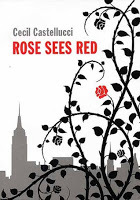
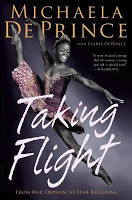
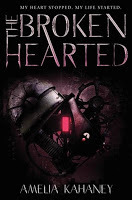
Rose Sees Red by Cecil Castellucci: In the 1980s, two teenaged ballet dancers--one American, one Russian--spend an unforgettable night in New York City, forming a lasting friendship despite their cultural and political differences.
Taking Flight by Michaela DePrince: The memoir of Michaela DePrince, who lived the first few years of her live in war-torn Sierra Leone until being adopted by an American Family. Now seventeen, she is one of the premiere ballerinas in the United States
The Broken Hearted by Amelia Kahaney: When seventeen-year-old Anthem Fleet is suddenly transformed into an all-powerfull superhero, she must balance her old life with the dark secret of who she has become. (This description doesn't tell you that Anthem was a ballerina before the transformation).
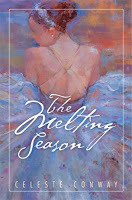
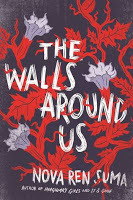
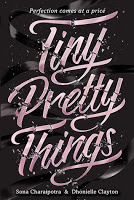
The Melting Season by Celeste Conway: Giselle, the sheltered daughter of two famous ballet dancers, comes to terms with her relationships with both her late father and her mother, realizing some important truths that help her move forward both in her life and with her own dancing.
The Walls Around Us by Nova Ren Suma: Orianna and Violet are ballet dancers and best friends, but when the ballerinas who have been harassing Violet are murdered, Orianna is accused of the crime and sent to a juvenile detention center where she meets Amber and they experience supernatural events linking the girls together.
Tiny Pretty Things by Sona Charaipotra and Dhonielle Clayton: Gigi, Bette, and June, three top students at an exclusive Manhattan ballet school, have seen their fair share of drama. Free-spirited new girl Gigi just wants to dance -- but the very act might kill her. Privileged New Yorker Bette's desire to escape the shadow of her ballet star sister brings out a dangerous edge in her. And perfectionist June needs to land a lead role this year or her controlling mother will put an end to her dancing dreams forever. When every dancer is both friend and foe, the girls will sacrifice, manipulate, and backstab to be the best of the best.
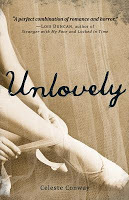
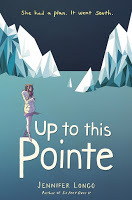
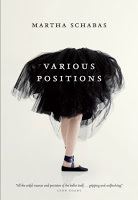
Unlovely by Celeste Conway: A boy is torn between his newfound love for a ballet dancer and the fear that she might be out to kill him.
Up To This Pointe by Jennifer Longo (January 19, 2016): Harper is a dancer. She and her best friend, Kate, have one goal: becoming professional ballerinas. And Harper won’t let anything—or anyone—get in the way of The Plan, not even the boy she and Kate are both drawn to.
Harper is a Scott. She’s related to Robert Falcon Scott, the explorer who died racing to the South Pole. So when Harper’s life takes an unexpected turn, she finagles (read: lies) her way to the icy dark of McMurdo Station . . . in Antarctica. Extreme, but somehow fitting—apparently she has always been in the dark, dancing on ice this whole time. And no one warned her. Not her family, not her best friend, not even the boy who has somehow found a way into her heart. (Description via Goodreads).
Various Positions by Martha Schabas: When talented, dedicated fourteen-year-old Georgia Slade becomes a student in an elite Toronto ballet academy, her confusing feelings toward one of her teachers lead to disaster.







 Related StoriesJuly Debut YA NovelsThird Quarter To-ReadJune Debut YA Novels
Related StoriesJuly Debut YA NovelsThird Quarter To-ReadJune Debut YA Novels



